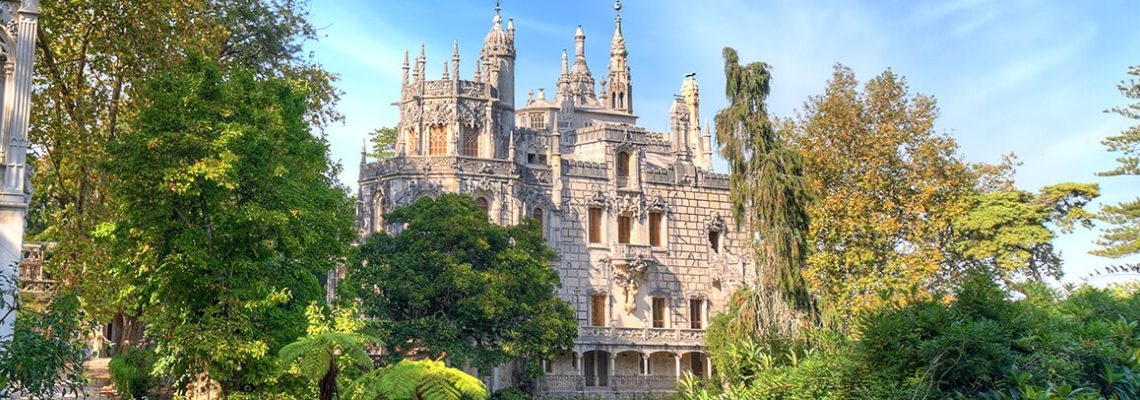“Romantic” and “magical” are words often used to describe Portugal as a whole, but they particularly apply to Sintra, a small town about 30 minutes from Lisbon. For centuries, this area offered the Portuguese royal court a cool and peaceful summer escape from the heat and bustle of Lisbon—hence the grand palaces and noble manor houses that dot the landscape, which make this a UNESCO World Heritage Site. But when people talk about Sintra, they aren’t only referring to the historical town center; the name also refers to the hills it sits on and the larger surrounding area.
A great part of Sintra’s appeal is its microclimate and the lush landscape it supports. Between forested hills, sandy beaches and rugged coastal cliff-top trails, this area attracts walkers, hikers, mountain bikers and surfers, as well as more traditional tourists and sightseers. Almost all of the major monuments are surrounded by wildly beautiful landscaped gardens and grounds which can take hours to fully explore. This added active, outdoor aspect is important to know about, because in recent years, Sintra’s center was beginning to suffer a bit from its own popularity; it was just getting too crowded. COVID travel shutdowns brought that to an abrupt halt, of course, and it might take a while for that level of congestion to build up again—which is a good reason to come and see it now. At the very least, understanding more about the area can help visitors get the full benefit of what it has to offer. It is almost impossible to enter the center with a car, these days, and inconvenient to get to some of the further flung sites without one. Advance research and planning, or support from a tour, guide and/or driver, are advisable.
Many daytrippers from Lisbon come in by train, wander around the center’s little cobbled streets, sample some regional pastries at a local café, then make a beeline for Pena Palace, the Moorish Castle and/or the National Palace. If time is limited, those Big Three are the logical touristic sites to hit, possibly substituting the neo-Gothic Quinta da Regaleira for one of them, because these are all clustered in the center. (Photos of Quinta da Regaleira’s mysterious, spiraling Initiation Well frequently pop up in articles about Sintra.)
There is so much more to see and do in the Sintra area, however, that it’s a pity to stop there. To name just a few possibilities, with the briefest possible descriptions to whet your appetite:
– Monserrate Palace, built in the mid-19th century on older ruins, straight out of a fairy-tale; the garden features plant and tree specimens from all over the world, including banyan trees growing up through the walls of a roofless folly
– Peninha Sanctuary, at the top of a remote and craggy outcrop that offers views of the entire, breathtaking coastline
– Capuchos Convent, a tiny, rather astonishing monastery hewn out of natural stone
– Condessa da Edla Chalet, located on the Pena Palace grounds, a fanciful lovenest
– Queluz Palace, an 18th-century “mini-Versaille”; in warmer months a weekly equestrian show features an exhibition of Portuguese dressage riding
– Mafra National Palace, an enormous Baroque extravaganza (palace, basilica and monastery, with a famous library) built to celebrate the birth of a longed-for royal baby
– Colares, a pleasant village with several good restaurants, a winery where tastings can be arranged and a craft beer brewery
As always when it comes to Portugal, bring a good pair of walking shoes, strong sunscreen, a sense of wonder…and get ready to fall in love.
Visit Sintra with Terracotta Journeys.
By Holly Blades

